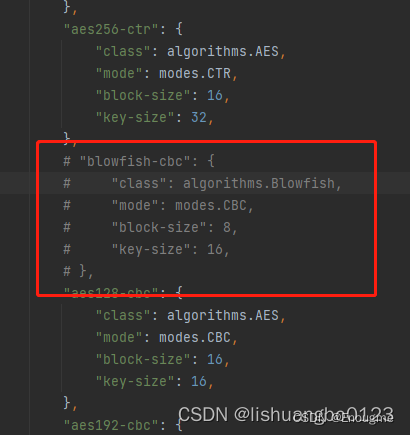一:使用 paramiko 进行SSH连接
首先确保已安装paramiko库:pip install paramiko
代码示例
python
在这里插入代码片import paramiko
hostname = 'hostname'
username = 'user'
password = 'passwd'
client = paramiko.SSHClient()
client.set_missing_host_key_policy(paramiko.AutoAddPolicy())
client.connect(hostname, username=username, password=password)
stdin, stdout, stderr = client.exec_command('ls')
for line in stdout:
print(line.strip('\n'))
client.close()二:使用 smtplib 发送邮件到SMTP服务器
代码示例
python
import smtplib
from email.mime.text import MIMEText
from email.header import Header
# 邮件发送者和接收者
sender = 'from@example.com'
receivers = ['to@example.com']
# 邮件内容
message = MIMEText('Python 邮件发送测试...', 'plain', 'utf-8')
message['From'] = Header("Python教程", 'utf-8')
message['To'] = Header("测试", 'utf-8')
message['Subject'] = Header('Python SMTP 邮件测试', 'utf-8')
try:
smtpObj = smtplib.SMTP('localhost')
smtpObj.sendmail(sender, receivers, message.as_string())
print("邮件发送成功")
except smtplib.SMTPException as e:
print("Error: 无法发送邮件", e)三:上传文件到服务器
python
import paramiko
def upload_file_to_server(hostname, port, username, password, local_file_path, remote_file_path):
try:
client = paramiko.SSHClient()
client.set_missing_host_key_policy(paramiko.AutoAddPolicy())
client.connect(hostname, port=port, username=username, password=password)
ftp_client = client.open_sftp()
ftp_client.put(local_file_path, remote_file_path)
ftp_client.close()
client.close()
print("文件上传成功")
except Exception as e:
print(f"文件上传失败: {str(e)}")
# 示例
upload_file_to_server('hostname', 22, 'username', 'password', '/path/to/local/file', '/path/to/remote/file')四:从服务器下载文件
代码示例
python
import paramiko
def download_file_from_server(hostname, port, username, password, remote_file_path, local_file_path):
try:
client = paramiko.SSHClient()
client.set_missing_host_key_policy(paramiko.AutoAddPolicy())
client.connect(hostname, port=port, username=username, password=password)
ftp_client = client.open_sftp()
ftp_client.get(remote_file_path, local_file_path)
ftp_client.close()
client.close()
print("文件下载成功")
except Exception as e:
print(f"文件下载失败: {str(e)}")
# 示例
download_file_from_server('hostname', 22, 'username', 'password', '/path/to/remote/file', '/path/to/local/file')五:在服务器上执行命令
python
import paramiko
def execute_command_on_server(hostname, port, username, password, command):
try:
client = paramiko.SSHClient()
client.set_missing_host_key_policy(paramiko.AutoAddPolicy())
client.connect(hostname, port=port, username=username, password=password)
stdin, stdout, stderr = client.exec_command(command)
print("命令输出:")
for line in stdout:
print(line.strip())
client.close()
except Exception as e:
print(f"执行命令失败: {str(e)}")
# 示例
execute_command_on_server('hostname', 22, 'username', 'password', 'ls')往服务器传文件时报错:
python
CryptographyDeprecationWarning: Blowfish has been deprecated and will be removed in a future release
"class": algorithms.Blowfish,解决方案:
报错文件里面 以下的代码注释掉即可
